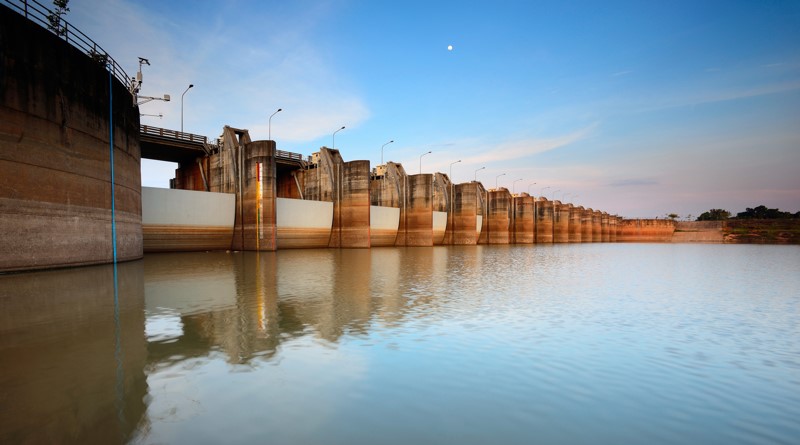Most people to live under growing threat of ageing dams in 20 years

By 2050, most people across the world will be living downstream of hundreds of large dams that have been operating at or beyond their design life, a new analysis by the UN University has indicated, warning that ageing water storage infrastructure is slowly growing into a significant global development issue.
Thousands of large dams built in the middle of the previous century have already or will soon exceed the age of 50 years – a lower bound of dam design lifespans – and many are approaching 100 years. As a result, they will incur more significant maintenance costs while simultaneously declining in effective functionality and posing threats to the environment and human safety.
To effectively deal with this emerging problem, it will be important to develop frameworks to understand decommissioning processes and outcomes. This depends on accurate data, understanding of the factors and impacts of dam ageing in the local context, and establishing relevant policies soon, a recent report by the Canada-based Institute for Water, Environment and Health of the UN University has stated.
The report has identified that most of the world’s 58,700 large dams were built during the 1930-1970 period with a design life of 50 to 100 years, with 93 per cent of them located in just 25 countries.
China is home to 23,841 large dams, equating to 40 per cent of the world’s total while 55 per cent are concentrated in just four Asian countries: China, India, Japan and South Korea.
Signs of ageing include increasing cases of dam failure, rising repair and maintenance costs, reservoir sedimentation and the loss of dam functionality.
The report says dams that are well designed, constructed and maintained can “easily” reach 100 years of service but predicts an increase in “decommissioning” — a phenomenon gaining pace in the USA and Europe — as economic and practical limitations prevent ageing dams from being upgraded or if their original use is now obsolete.
Worldwide, the huge volume of water stored behind large dams is estimated at 7,000 to 8,300 cubic kilometers — enough to cover about 80% of Canada’s landmass under a meter of water.
“Underlined is the fact that the rising frequency and severity of flooding and other extreme environmental events can overwhelm a dam’s design limits and accelerate a dam’s ageing process. Decisions about decommissioning, therefore, need to be taken in the context of a changing climate,” said UNU-INWEH Director Vladimir Smakhtin, one of the report’s co-authors.
Noting that the pace of large dam construction has dropped dramatically since the 1970s, the report highlights that nearly 50 per cent of global river volume is already fragmented or regulated by dams. The drop in dam construction is also due in part to concerns regarding the environmental and societal impacts of large dams, as well as emerging ideas and practices on alternative types of water storage, nature-based solutions and types of energy production beyond hydropower.
While some decommissioning work has been undertaken, particularly in the USA and Europe, the report points to the complex issues surrounding this, saying; “Dam decommissioning should be seen as equally important as dam building in the overall planning process on water storage infrastructure developments.” It also expresses concerns that a lack of knowledge in this respect “may progressively and adversely affect the ability to manage water storage infrastructure properly as it is ageing”.
There are also strong concerns regarding the environmental and social impacts of dams, and large dams in particular, as well as emerging ideas and practices on the alternative types of water storage, nature-based solutions, and types of energy production beyond hydropower.
Public safety, escalating maintenance costs, reservoir sedimentation, and restoration of a natural river ecosystem are among the reasons driving dam decommissioning, the report notes.
However, most dams removed to date have been small; decommissioning large dams (defined by ICOLD as 15 or more metres from lowest foundation to crest, or 5 to 15 metres impounding more than 3 million cubic metres) is “still in its infancy, with only a few known cases in the last decade.”
“A few case studies of ageing and decommissioned large dams illustrate the complexity and length of the process that is often necessary to orchestrate the dam removal safely,” adds co-author and UNU-INWEH Adjunct Professor R Allen Curry, based at the University of New Brunswick.
“Even removing a small dam requires years (often decades) of continuous expert and public involvement, and lengthy regulatory reviews. With the mass ageing of dams well underway, it is important to develop a framework of protocols that will guide and accelerate the dam removal process”, Curry adds.
Decommissioning will also have various positive and negative economic, social, and ecological impacts to be considered in a local and regional social, economic, and geographic context “critical to protect the broader, sustainable development objectives for a region,” the report says.
“Overall, dam decommissioning should be seen as equally important as dam building in the overall planning process on water storage infrastructure developments.”



